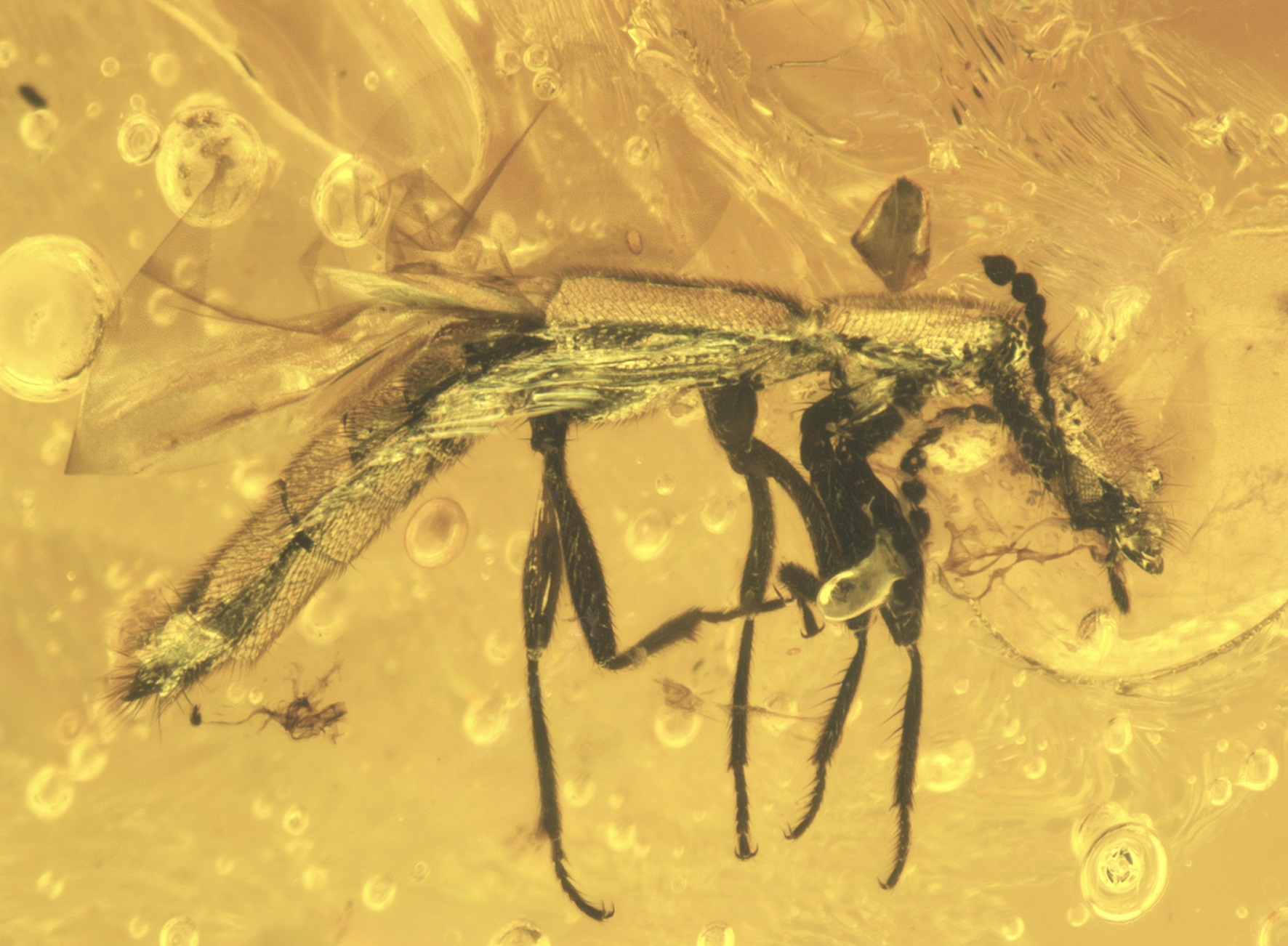An innovative method for estimating the age of fossil deposits
 An insect is enclosed in this Baltic amber. Fossil finds like this were part of the method development process. © LIB, Żyła
An insect is enclosed in this Baltic amber. Fossil finds like this were part of the method development process. © LIB, Żyła
Fossils are the key source of information of the life that existed on Earth millions year ago. But sometimes researchers are missing an important piece of the puzzle to see the whole picture, like when the available data are not enough for calculating the age of fossils and the deposits where they were collected. Of course, it limits the knowledge that we can get from such fossils. Thus, within this study, a new method for calculating the age of problematic fossil deposits has been invented.
In the world of science, researchers often deal with finds whose origins date back to millions of years. Accurate dates for such fossils and deposits that they were collected from are important for understanding the time of evolutionary events and allow researchers to answer questions about ecology, biogeography, and climate of the past. However, there are some fossil deposits where traditional dating methods have failed, and their ages remain uncertain. Dr Dagmara Żyła, a leader of beetle section at the Museum of Nature Hamburg, together with a team of researchers, has now developed a new method for calculating the age of problematic deposits. They did that by combining DNA information of living species and the morphology of fossil and living species within the framework of advanced Bayesian statistics.
More specifically, the method is based on the Bayesian total-evidence phylogenetic analyses under the fossilized birth-death model, which help to complete even incomplete information through complex calculations.
The researchers examined this approach in more detail to shed light on how accurate the calculations are. For this purpose, they first generated exemplar datasets of beetles with fossils and showed that calculations of fossil ages using phylogenetic analysis are accurate. Later, they used a real data on of living and fossil penguins to confirm the results.
“Of course, the more reliable data we have, the more precisely we can determine the age of fossils. Nevertheless, our study showed that this approach leads to valid results even with patchy documentation,” says Dagmara Żyła.
Researchers for data sets can use this method where many fossils are well dated, but some specimens come from a deposit with uncertain dates, for example, the Baltic amber deposit for insects – such as beetles used as a model in the study – or the Gobi Desert deposit for dinosaurs.
“The knowledge of the age of these problematic fossil deposits could be useful in evolutionary biology, paleoecology, biogeography, and paleoclimatology. It gives us an insight into, for example, the ecosystems’ response to the dynamic climate changes that took place in the past and formed the recent animal and plant life”, Żyła summarises.
“The next step that I am working on is to use our approach to calculate the age of Baltic amber using beetle dataset that I have been building for many years. Baltic amber from Northern Europe is an outstanding deposit with thousands of well preserved fossils, but also one of the examples of problematic deposits. We know it originated in Eocene, but with an age range between 55 and 34 million years, which is too large to provide meaningful information”, explains Żyła. This is very unfortunate, she says, especially because the Eocene was a time of dynamic climate with several warming and cooling events and is considered an analogue of today’s climatic changes. Knowing the age of these fossils is very important for reconstructing the evolutionary events that took place in response to such changes.


